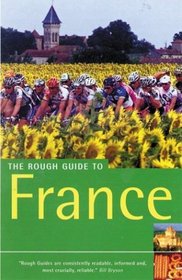Search -
Rough Guide to France 8 (Rough Guide Travel Guides)
Rough Guide to France 8 - Rough Guide Travel Guides
Author:
INTRODUCTION The sheer physical diversity of France would be hard to exhaust in a lifetime of visits. The landscapes range from the fretted coasts of Brittany and the limestone hills of Provence to the canyons of the Pyrenees and the half-moon bays of Corsica, and from the lushly wooded valleys of the Dordogne and the gentle fields of the Loire... more »
Author:
INTRODUCTION The sheer physical diversity of France would be hard to exhaust in a lifetime of visits. The landscapes range from the fretted coasts of Brittany and the limestone hills of Provence to the canyons of the Pyrenees and the half-moon bays of Corsica, and from the lushly wooded valleys of the Dordogne and the gentle fields of the Loire... more »
ISBN-13: 9781843530565
ISBN-10: 1843530562
Publication Date: 7/28/2003
Pages: 1,328
Rating: ?
ISBN-10: 1843530562
Publication Date: 7/28/2003
Pages: 1,328
Rating: ?
0 stars, based on 0 rating
Genres:
- Travel >> Europe >> France >> General
- Travel >> Guidebook Series >> Rough Guide




